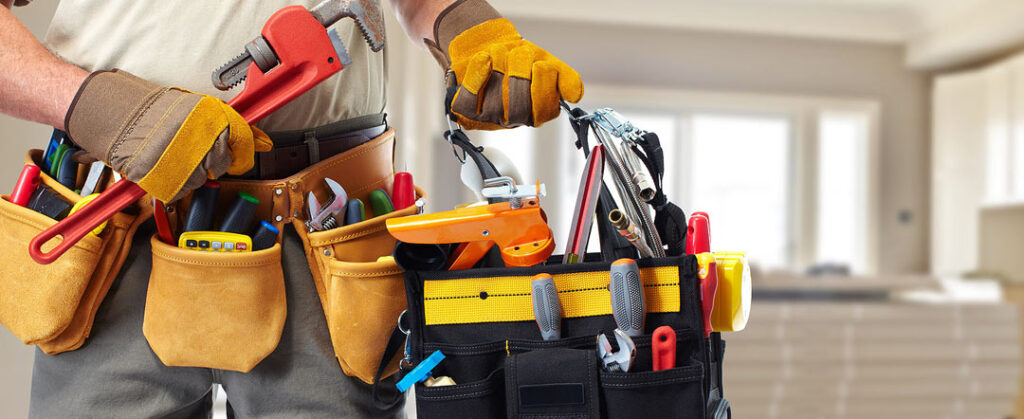Working as a handyman lets you use your construction-oriented skills to help people improve or repair their homes. You get to work with your hands, meet a variety of customers and work at different locations each day instead of sitting in an office. Customers can be demanding, however, and they might not want to pay the rates you must charge to cover overhead and make a profit.
Working for Yourself
Some handymen work for builders or other companies, but many work for themselves. This is an advantage, giving you flexibility to set your own schedule, work with customers and subcontractors you choose, and set your own pricing. Running your own handyman business can also have some negatives. When business is slow, there’s no company to pay you a salary – you’ll get paid only for work you complete. In addition, being self-employed usually means you must pay for your own benefits in full, such as health insurance.
Even as a handyman looking for side work, you’ll have to deal with billing and collecting clients. You can increase your work offers and choose your clients more carefully if you join organizations like the Association of Certified Handyman Professionals or United Brotherhood of Carpenters.
Picking Your Jobs
You know your skill set and the kinds of jobs you like to do; working for yourself lets you specialize in your favorite fields. Handymen perform many functions, from basic plumbing and electrical work to painting, hanging bathroom hardware, building bookshelves, or installing flooring and adding indoor trim such as crown molding.
Some work outside homes, fixing roofs and siding or replacing rotten window frames. Picking the jobs you like best might be an advantage, but it can limit your income if you must wait on jobs to come your way.
Nearly every handyman job includes some measure of messiness – more so on jobs that require you to crawl under a house, for example – along with heavy lifting. Being too picky about the jobs you accept can cause you to lose business.
Needed on Short Notice
A downside of working as a handyman is that people often need your services in a hurry. Some jobs can be planned in advance, such as interior or exterior painting, but other jobs come from people in immediate need. Perhaps a light fixture won’t work because a wire burned out, or there’s a leaky pipe in the basement.
When you’re not busy, responding to these calls the same day might not be a problem. However, when you already have jobs scheduled — which keeps your business flowing smoothly – emergency calls can push back your schedule or cause you to turn down jobs in favor of those scheduled in advance. No matter how you handle emergencies, chances are that one of your customers won’t be happy.
On the positive side, if you manage to squeeze in both scheduled jobs and emergency work – perhaps by working through dinner – you might have gained a lifelong customer who refers you to friends every chance she gets, increasing your customer base. Keep in mind that scheduling is especially difficult if you must work around weather conditions to complete a job. You’re not in control of the weather, so always include a caveat that bad weather could affect the completion date.
Managing Your Overhead
Pricing handyman jobs is a balancing act, explains the Journal of Light Construction. The prices should be affordable and reasonable for your customer, but you must make a profit. The ability to choose your jobs means that you can pick the ones most profitable for you. However, the pricing must help you cover your overhead.
Even if you’re running a business out of your house, you need to pay for items such as the right tools, business insurance, licenses required by state and local governments, mileage and car maintenance, funds for marketing, and the ability to pay any subcontractors who help you with big jobs.

